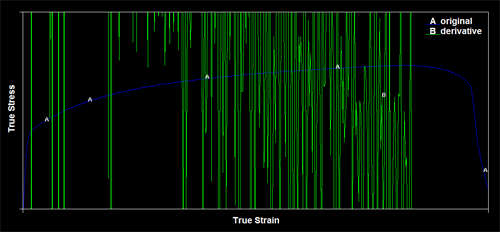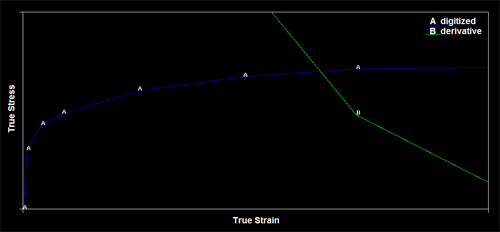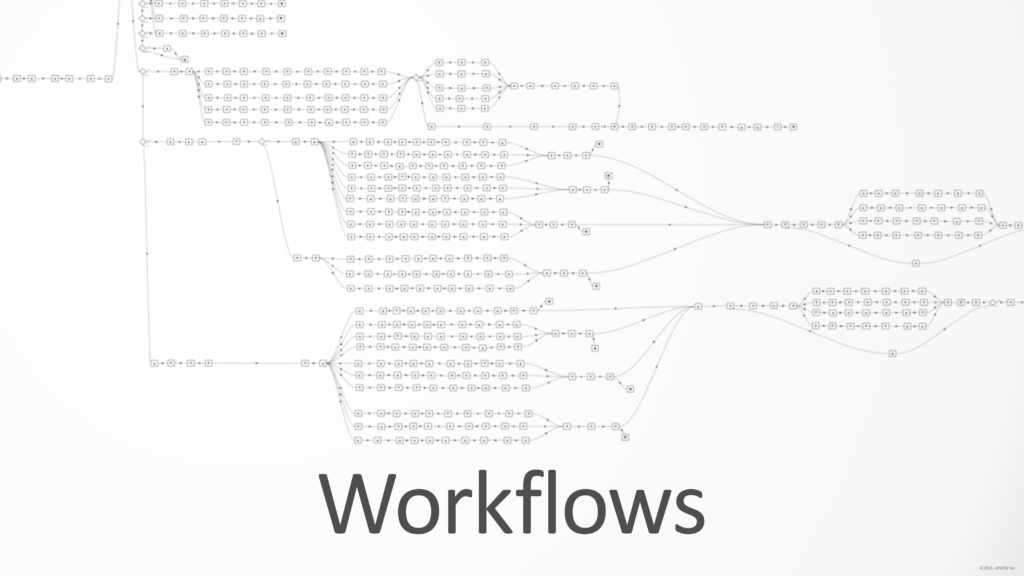When characterizing materials such as Metals and Plastics in LS-DYNA, most constitutive models provide a yield criteria that accounts for a 3D state of stress which reduces to a uniaxial yield stress in 1D. This allows us to directly input the true stress-strain curve from a one-dimensional state of stress testing such as in uniaxial testing which then can be used for any 3D problems. One important consideration in the usage of such one-dimensional testing data is the phenomenon called necking which occurs in both Metals and Plastics. It is well known that post-necking stress state is no longer uni-axial but is a 3D state of stress. This limits us to use uniaxial information only upto necking and use some sort of iterative process to characterize the post-necking behavior. The first task therefore is to identify the necking point on a uni-axial true stress-strain curve. This is done by plotting the true stress-strain curve against its derivative. The intersection point of these curves is the necking point. When this curve overlay is done using the raw test data, which is sampled at a high frequency, the derivative may be extremely noisy and this may provide multiple intersection points. A sample of such noisy overlay is shown here:
To overcome this, it is usually recommended to digitize the raw curve using anywhere from 10-100 equi-distant points which provides a very smooth derivative of the true-stress-strain curve ensuring a unique point of intersection (necking point). A digitized curve using the raw test data is shown here.

















